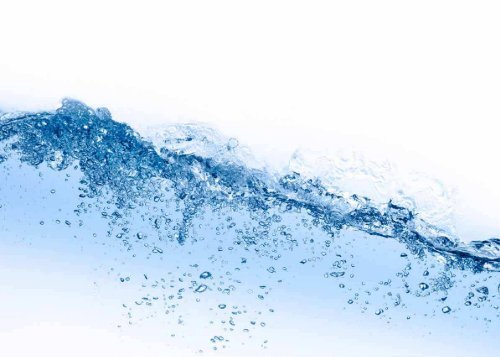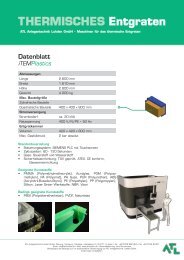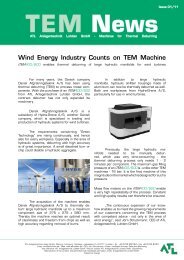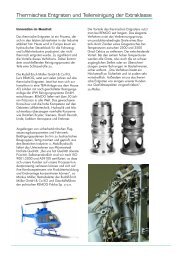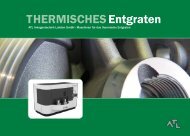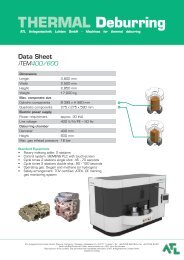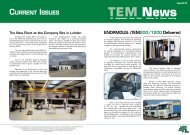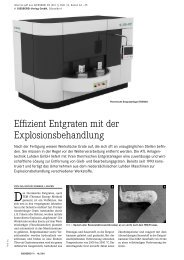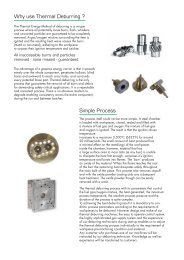item Product brochure - ATL Luhden
item Product brochure - ATL Luhden
item Product brochure - ATL Luhden
You also want an ePaper? Increase the reach of your titles
YUMPU automatically turns print PDFs into web optimized ePapers that Google loves.
Subsequent to TEM<br />
After the TEM process, the burnt down material<br />
deposits in the form of ferric oxide on the whole<br />
surface of the workpiece. Due to this fact, a subsequent<br />
treatment of the components is generally<br />
necessary. Exceptions exist for workpieces which<br />
are subject to subsequent galvanization, nitration or<br />
hardening.<br />
An appropriate washing technology should be<br />
promptly - between 1 to max. 3 days - applied to<br />
steel and steel casting parts. In case that the ferric<br />
oxide remains on the processed areas for a longer<br />
period of time, corrosion pits can be the result. The<br />
following washing technologies can be used:<br />
1. pH-neutral cleaning with ultrasonic support<br />
In so-called single chamber systems, the workpieces<br />
are placed in cages and cleaned in a bath<br />
by means of ultrasonic. Additionally, the parts<br />
are hosed down with high pressure (16 - 18 bar).<br />
Following this, the workpieces are passivated and<br />
dried under vacuum. This technology has gained<br />
worldwide acceptance in the recent years - particularly<br />
noteworthy are:<br />
▪ Compared to the second method, the higher<br />
machine costs amortize because of the lower<br />
energy costs<br />
▪ pH-neutral cleaners already clean at a temperature<br />
of 40 °C, acid not below 60 - 70 °C<br />
2. Pickling by acid<br />
The workpieces are treated in a phosphoric-sulphuric<br />
bath. This method is effective, but entails a<br />
few drawbacks:<br />
▪ Heavy burden on environment and humans<br />
▪ High disposal costs<br />
▪ Secondary damages to the workpiece caused by<br />
acid residuals are possible<br />
▪ Hydrogen embrittlement cannot be excluded<br />
For components made of aluminium or zinc diecasting,<br />
the subsequent treatment depends on the<br />
application area of the workpiece. Many workpieces<br />
are ready to install directly after the TEM process.<br />
But if the customer requires a low content of residual<br />
dirt for parts such as pneumatic valves, one<br />
cannot do without cleaning.<br />
23


